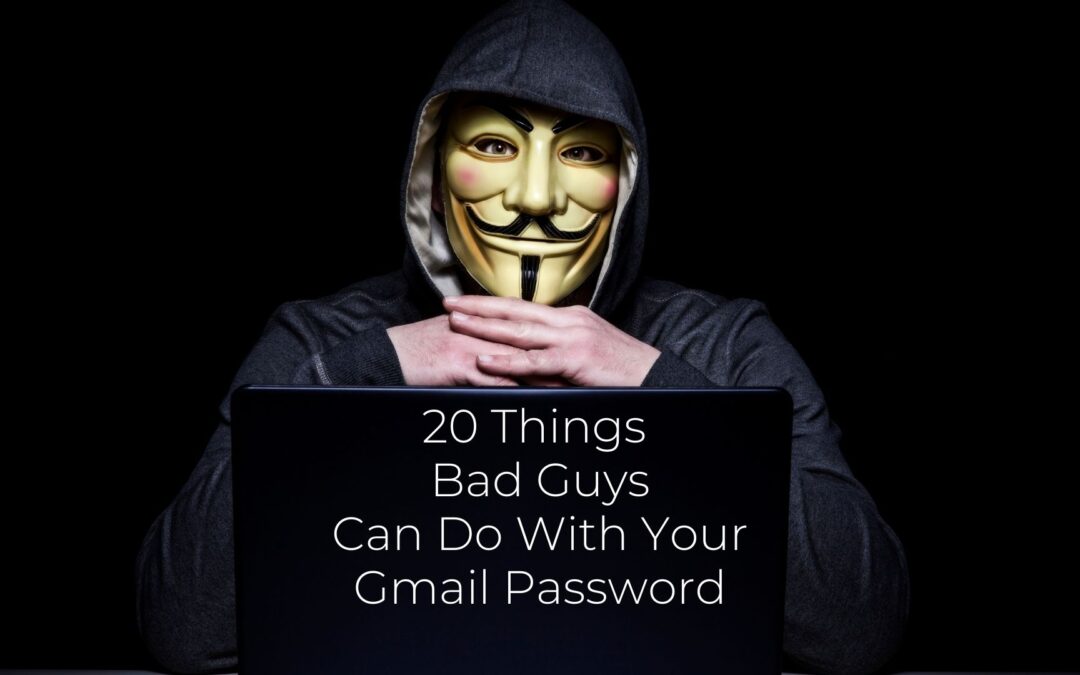Why is Protecting my Gmail Password so Important?
Is it a big deal if someone figures out your gmail password? Yeah, it can be pretty bad.
20 things a hacker can do with a person’s gmail login and password,
Here’s the list – assuming no multi-factor authentication (MFA) or authenticator is in place:
- Access Emails
- Read, delete, or send emails, which could lead to further phishing attacks or data theft.
- Reset Passwords
- Use the email account to reset passwords for other online accounts, gaining access to banking, social media, and other services.
- Identity Theft
- Use personal information found in emails to steal the victim’s identity.
- Financial Fraud
- Access financial information and perform fraudulent activities like unauthorized transactions.
- Social Engineering
- Gather information to craft convincing social engineering attacks on the victim’s contacts.
- Send Spam
- Use the account to send spam emails to the victim’s contacts or others, potentially spreading malware.
- Access Google Services
- Gain access to other Google services linked to the Gmail account, such as Google Drive, Photos, and Calendar.
- Monitor Communications
- Eavesdrop on communications, gaining sensitive information and insights into the victim’s activities.
- Compromise Other Accounts
- Use the email to access other accounts like social media, online shopping, and subscription services.
- Spread Malware
- Send malware to the victim’s contacts, leading to further infections and breaches.
- Delete Important Emails
- Delete important emails, potentially causing disruption in personal or professional communications.
- Alter Filters and Settings
- Change email filters and settings to redirect incoming emails to the hacker’s account.
- Subscribe to Services
- Sign up for unwanted services or subscriptions using the victim’s email.
- Blackmail
- Use sensitive information found in emails to blackmail the victim.
- Spoofing
- Impersonate the victim in emails to deceive others and conduct fraudulent activities.
- Track Location
- Use location data from emails or linked services to track the victim’s physical location.
- Access Contact List
- Access and use the victim’s contact list for further phishing or social engineering attacks.
- Phishing Campaigns
- Launch phishing campaigns targeting the victim’s contacts with more convincing attacks.
- Access Google Play
- Purchase apps or subscriptions through the Google Play Store linked to the account.
- Account Deletion
- Permanently delete the Gmail account and associated data, causing significant data loss.
Conclusion
The moral of the story is; think hard about using “dog’s name +123” or replacing an “a” with an “@”. Hacking & cracking is much more sophisticated and as you can see, the stakes are high.
Complicated passwords & multi-factor authentication are your friends
Questions? Like to see how we can help your B2B “make a big splash online”? Complete the form below and let’s talk!

